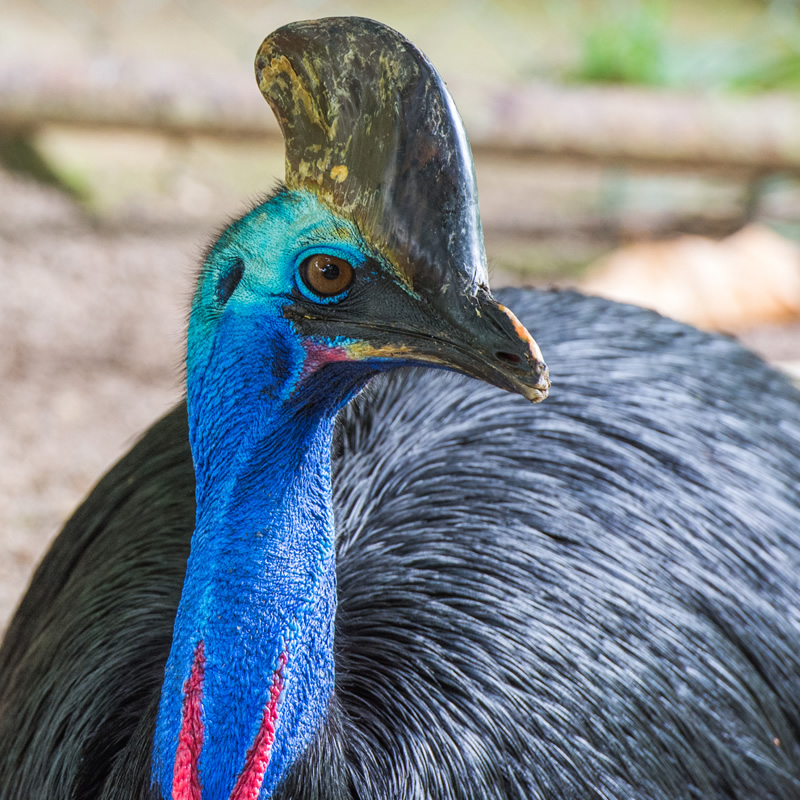
Located
Southern cassowaries can be found in Northern Australia, New Guinea and surrounding islands.
Diet
The diet of the southern cassowary consists mainly of fruit. The cassowary is valuable to the rainforest because they spread the seeds of large fruit after eating the fruit. After the fruit is initially eaten, the seeds pass through the digestive tract of the cassowary and exit in the dung of the cassowary. In this respect they have been described as "gardeners of the rainforest". The cassowary will also consume vegetation, insects and fungi.
Habitat
Cassowaries are true rainforest birds. They are suited to live in the dense foliage of the rainforest and the low, swampy areas of Northern Australia and New Guinea.
Size and Description
Cassowaries are the second heaviest bird on earth second only to the ostrich. They can weigh up to 130 pounds. The average height of an adult cassowary is between 4.5 - 6 feet tall. Both the female and male adult cassowary have the same appearance. The plumage, or feathers, of the cassowary are black and cover the bird from the neck to the rump. Like the ostrich, the feathers do not assist the cassowary in flight. Rather, they offer protection from the elements of the rainforest. The neck and head are a beautiful, bright blue color. On the top of the head is a casque, a helmet-like structure that may protect the bird from thorns and branches that could scrape its face. The feet are equipped with three toes that have sharp claws. The inner toe has an enlarged claw that is used as protection against potential predators.
Reproduction
The breeding season occurs between June and November. During this time the female can mate with one or more male cassowaries. After mating, the female will build a nest out of foliage in a scrape and will lay between 2 - 5 eggs. The male will then incubate the eggs and remain with the chicks for many months until they are capable of defending themselves.
Notes
Although beautiful, the cassowary is potentially dangerous and should not be approached if seen in the wild.
The cassowary, like many other rainforest animals, is threatened by human activity. This includes hunting and habitat loss due to deforestation.
